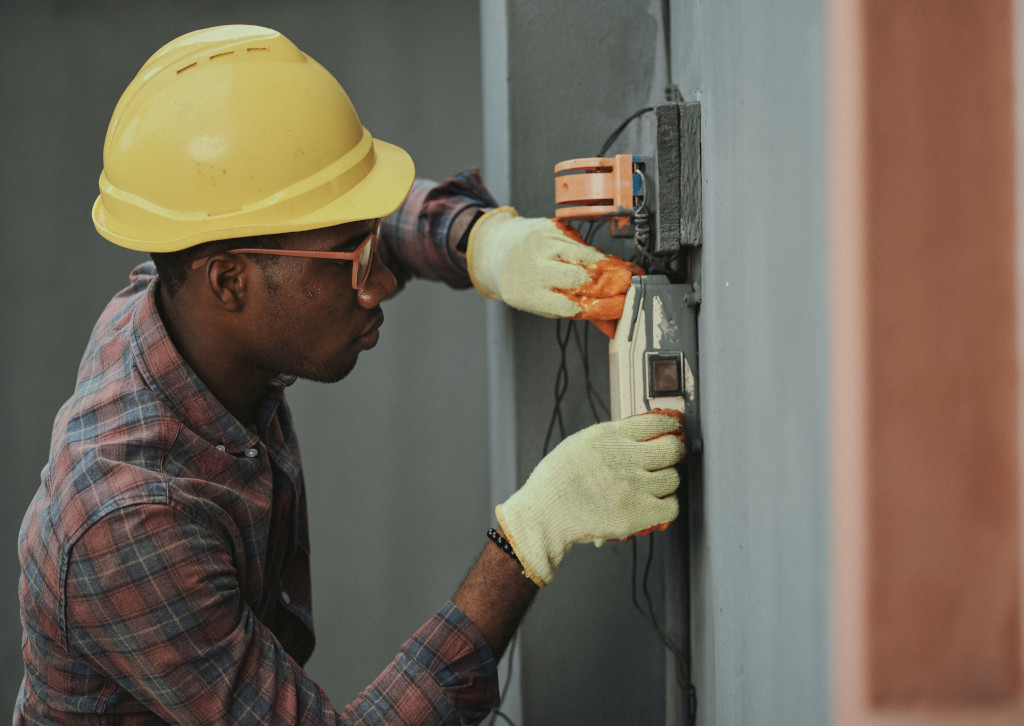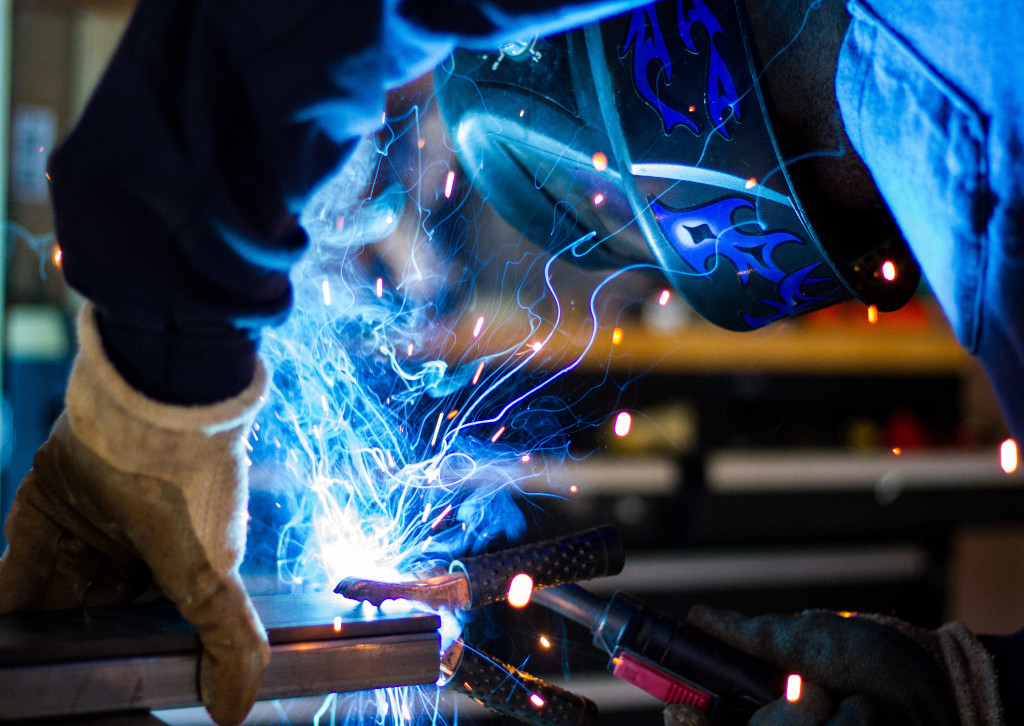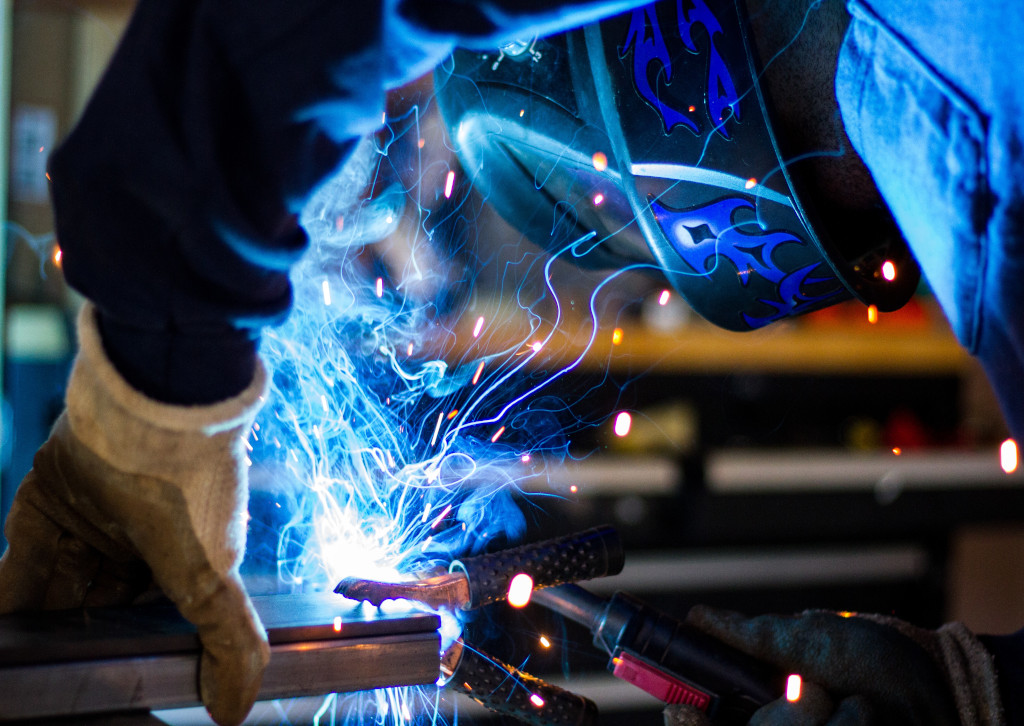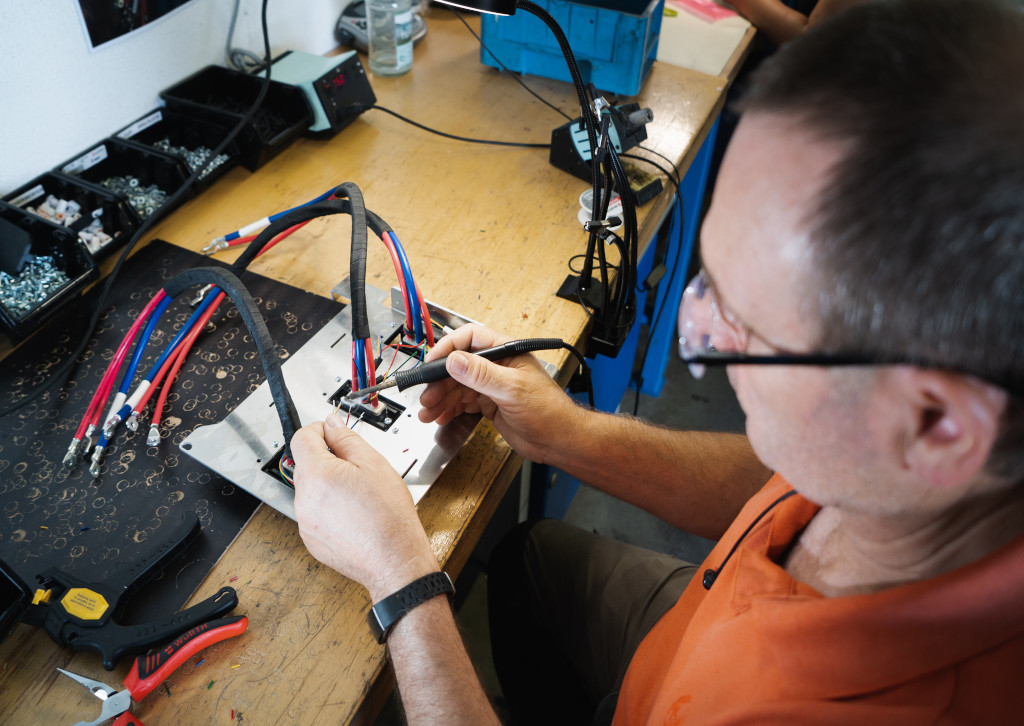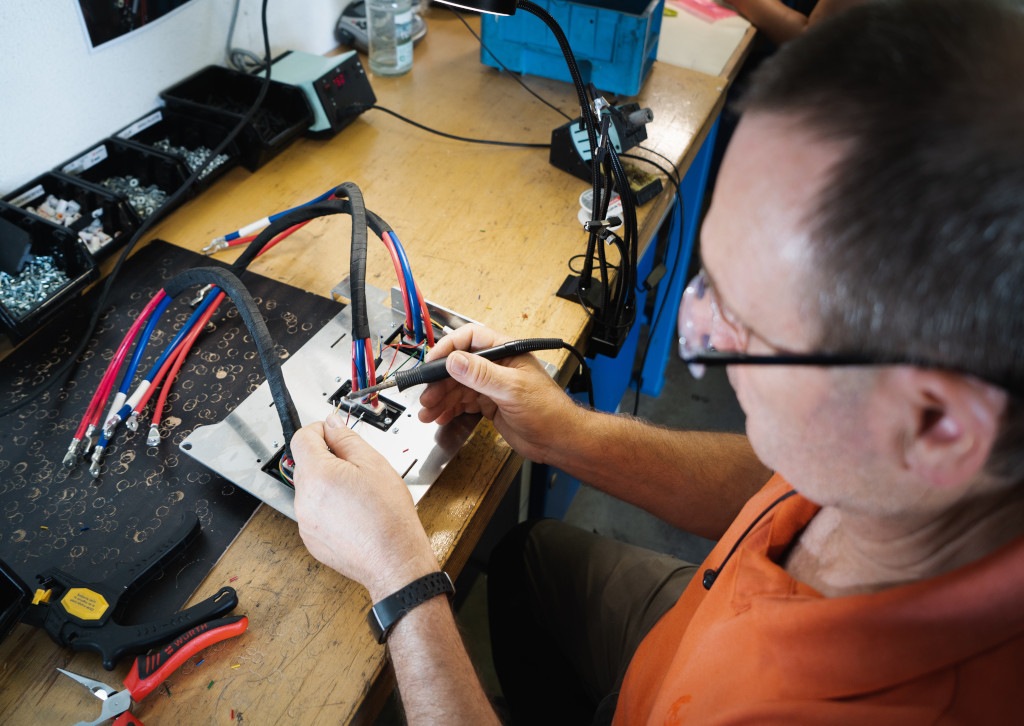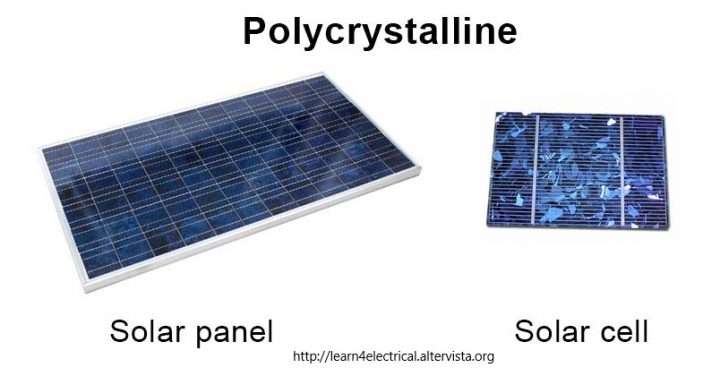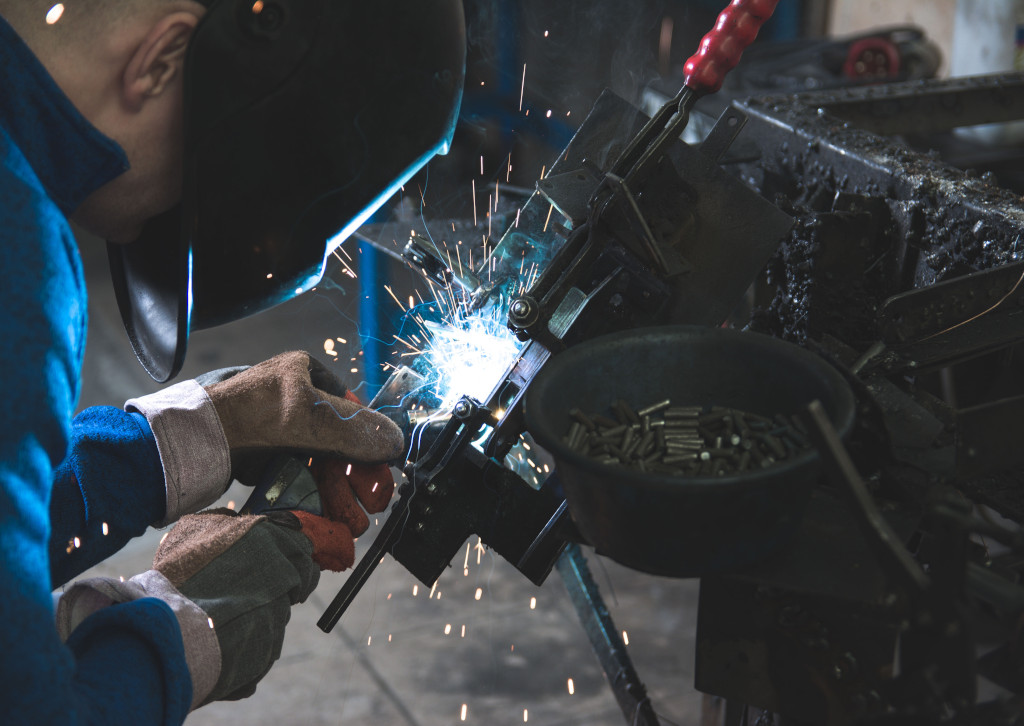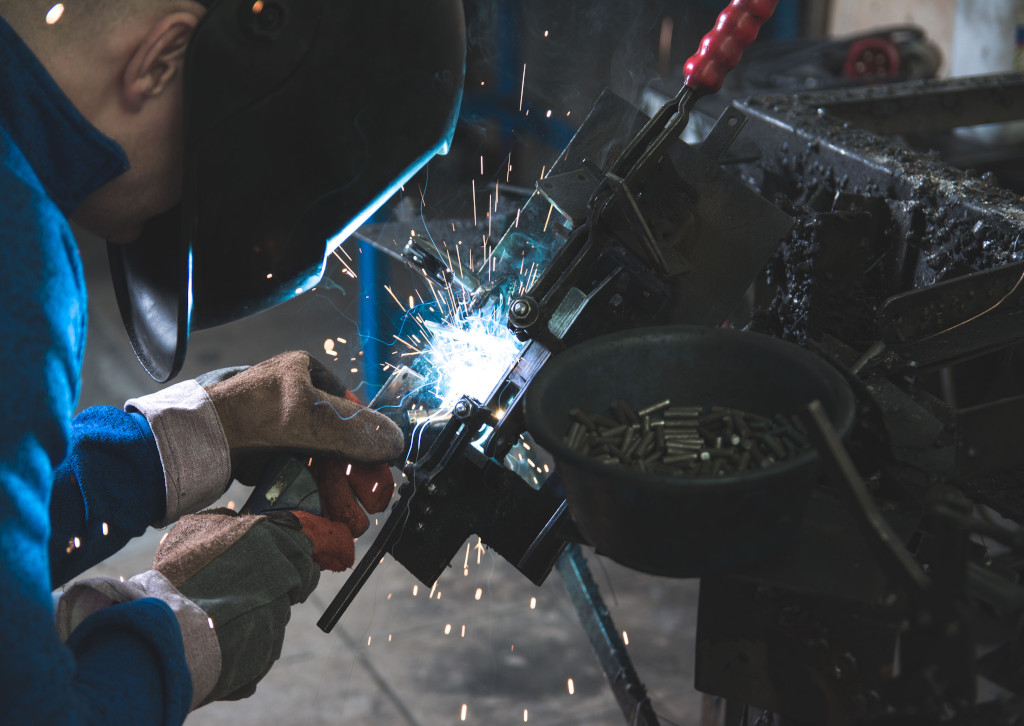Equipment of Switch Gear
Following are the main Equipment of Switch Gear,
1) Switches
A switch is main equipment of switch gear, it is a device which is used to open or close an electrical circuit in a convenient way. It can be used under full-load or no-load conditions but it cannot interrupt the fault currents. When the contacts of a switch are opened, an arc is produced in the air between the contacts. This is particularly true for circuits of high voltage and large current capacity.
The switches may be classified into:
a) Disconnector (or isolator)
This switch is a manually-operated, lockable, two-position device (open/closed) which provides safe isolation of a circuit when locked in the open position. Its characteristics are defined in IEC 60947-3. A disconnector is not designed to make or to break current and no rated values for these functions are given in standards. It must, however, be capable of withstanding the passage of short-circuit currents and is assigned a rated short-time withstand capability, generally for 1 second, unless otherwise agreed between user and manufacturer. This capability is normally more than adequate for longer periods of (lower-valued) operational over current, such as those of motor-starting. Standardized mechanical-endurance, over voltage, and leakage-current tests, must also be satisfied.
b) Load-breaking switch
This control switch is generally operated manually (but is sometimes provided with electrical tripping for operator convenience) and is a non-automatic two-position device (open/closed). It is used to close and open loaded circuits under normal unfaulted circuit conditions. It does not consequently, provide any protection for the circuit it controls.
IEC standard 60947-3 defines:
The frequency of switch operation (600 close/open cycles per hour maximum)
Mechanical and electrical endurance (generally less than that of a contactor)
Current making and breaking ratings for normal and infrequent situations
When closing a switch to energize a circuit there is always the possibility that an unsuspected short-circuit exists on the circuit. For this reason, load-break switches are assigned a fault-current making rating, i.e. successful closure against the electrodynamic forces of short-circuit current is assured. Such switches are commonly referred to as “fault-make load-break” switches. Upstream protective devices are relied upon to clear the short-circuit fault.
c) Remote control switch
This device is extensively used in the control of lighting circuits where the depression of a pushbutton (at a remote-control position) will open an already-closed switch or close an opened switch in a bi-stable sequence.
Typical applications are:
• Two-way switching on stairways of large buildings
• Stage-lighting schemes
• Factory illumination, etc.
Auxiliary devices are available to provide:
• Remote indication of its state at any instant
• Time-delay functions
• Maintained-contact features
2) Fuses
Fuses exist with and without “fuse-blown” mechanical indicators. Fuses break a circuit by controlled melting of the fuse element when a current exceeds a given value for a corresponding period of time; the current/time relationship being presented in the form of a performance curve for each type of fuse.
Standards define two classes of fuse:
• Those intended for domestic installations, manufactured in the form of a cartridge for rated currents up to 100 A and designated type gG in IEC 60269-1 and 3
• Those for industrial use, with cartridge types designated gG (general use); and Gm and aM (for motor-circuits) in IEC 60269-1 and 2
The first letter indicates the breaking range:
• “g” fuse-links (full-range breaking-capacity fuse-link)
• “a” fuse-links (partial-range breaking-capacity fuse-link)
The second letter indicates the utilization category; this letter defines with accuracy the time-current characteristics, conventional times and currents, gates.
For example
“gG” indicates fuse-links with a full-range breaking capacity for general application
“gM” indicates fuse-links with a full-range breaking capacity for the protection of motor circuits
“aM” indicates fuse-links with a partial range breaking capacity for the protection of motor circuits
The main differences between domestic and industrial fuses are the nominal voltage and current levels (which require much larger physical dimensions) and their fault-current breaking capabilities.
3) Circuit Breakers
A circuit breaker in equipment of Switch Gear is an equipment which can open or close a circuit under all conditions viz. no load, full load and fault conditions. It is so designed that it can be operated manually (or by remote control) under normal conditions and automatically under fault conditions. For the latter operation, a relay circuit is used with a circuit breaker.
Types of Low Voltage Circuit Breakers:
i) Miniature Circuit Breaker
ii) Moulded Case Circuit Breaker
iii) Residual Current Circuit Breaker
Types of Circuit Breakers w.r.t Arc Quenching Medium
i) Vacuum Circuit Breaker
ii) SF6 Circuit Breaker
iii) Oil Circuit Breaker
iv) Air Blast Circuit Breaker
4) Protective Relays
Protective relays are vital parts in Equipment of Switch Gear
A relay is a device which detects the fault and supplies information to the breaker for circuit interruption.
The function of a protective relay is to initiate a signal to circuit breakers for disconnecting the elements of the power system when it develops a fault.
When a fault occurs the relay, contacts are closed and the trip coil of the circuit breaker is energized to open the contacts of the circuit breaker.
There have been rapid developments in relaying technology during the last two decades. The most important advancement has been due to the advent of computer technology which has helped in the development of numerical relays.
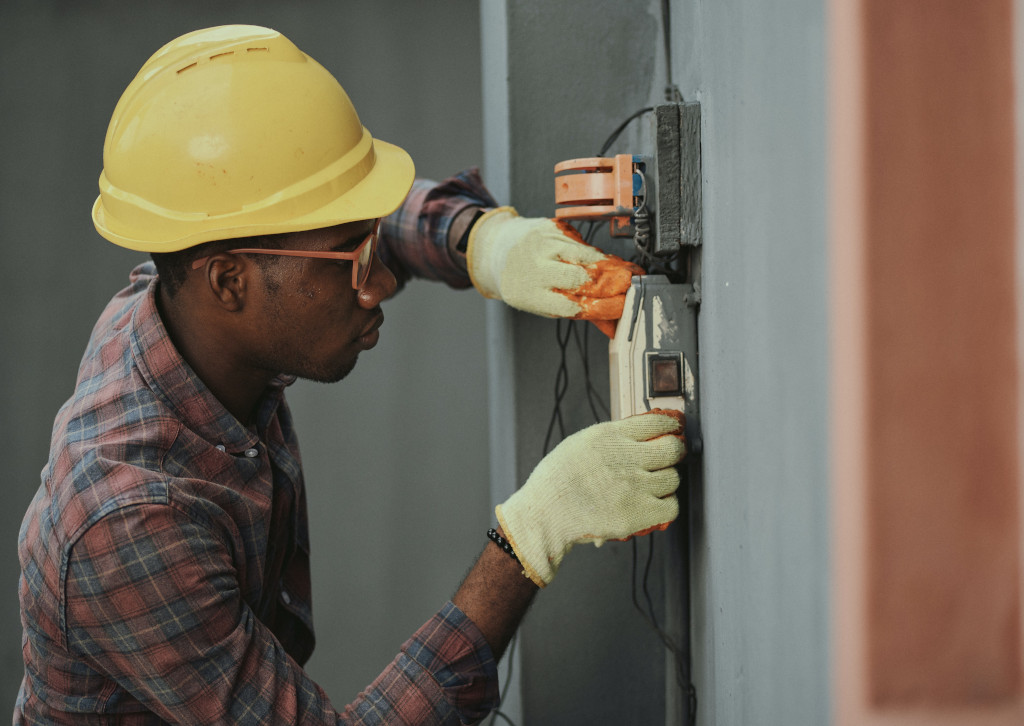
Relays use in Switch Gear
1. Earth Fault and Over current relay
2. Power Factor Controller Relay
3. Transformer Status Relay
4. Protection System Relay
5. Feeder Protection Relay
6. Transformer Protection Relay
7. Earth Fault Relay
8. DC Supervision Relay
➢ Fundamental Requirements of Protective Relaying
The principal function of protective relaying is to cause the prompt removal front service of any element of the power system when it starts to operate in an abnormal manner or interfere with the effective operation of the rest of the system. In order that protective relay system may perform this function satisfactorily, it should have the following qualities:
• Selectivity
• Speed
• Sensitivity
• Reliability
• Simplicity
• Economy
1) The prompt removal of the component which is behaving abnormally by closing the trip circuit of the circuit breaker or to sound an alarm.
2) Disconnect the abnormally operating part so as to avoid the damage or interference within the effective operation of the rest of the system.
3) Prevent the subsequent faults by disconnecting the abnormally operating part.
4) Disconnect the faulty part as quickly as possible so as to minimize the damage to the faulty part itself. For example, if there is a winding fault in a machine and if it persists for a long time then there is a possibility of the damage of the entire winding. As against this, if it is disconnected quickly then only a few coils may get damaged instead of the entire winding.
5) Restrict the spreading of the effect of the fault causing the least interference to the rest of the healthy system. Thus, by disconnecting the faulty part, the fault effects get localized.
6) To improve system performance, system reliability, system stability, and service continuity. The faults cannot be completely avoided but can be minimized. Thus, the protective relaying plays an important role in sensing the faults, minimizing the effects of faults and minimizing the damage due to the faults.
7) Instrument Transformers
Instrument transformers (current transformer and voltage transformer) are used in switch gear installations for the measurement of electrical parameters for protection and metering purposes. An instrument transformer in which the secondary current is substantially proportional to the primary current and differs in phase from it by approximately zero degrees is called a current transformer (CT). A voltage transformer (VT) is an instrument transformer in which the secondary voltage is substantially proportional to the primary voltage and differs in phase from it by approximately zero degrees.
8) Magnetic Contractor
The magnetic contractor in equipment of switch gear is a solenoid-operated switching device which is generally held closed by (a reduced) current through the closing solenoid (although various mechanically-latched types exist for specific duties). Contractors are designed to carry out numerous close/open cycles and are commonly controlled remotely by on-off push buttons.
9) Discontractor
A contractor equipped with a thermal-type relay for protection against overloading defines a “discontractor”. Discontractors are used extensively for remote push-button control of lighting circuits, etc., and may also be considered as an essential element in a motor controller.
The discontractor is not the equivalent of a circuit-breaker, since its short-circuit current breaking capability is limited to 8 or 10 In. For short-circuit protection therefore, it is necessary to include either fuses or a circuit-breaker in series with, and upstream of, the discontractor contacts.
Read more about Switch Gears
